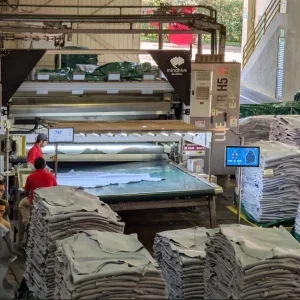Nigeria is one of the highest producers of leather and finished leather products in Africa; a study carried out by the Nigerian Economic Summit Group (NESG) projected that the Nigerian leather industry has the potential to generate over 1 billion dollars by 2025. The leather value chain is extensive; it includes animal husbandry, tanneries, finished leather products and leather products marketing.
Nigeria’s leather and leather products industry currently employs over 750,000 workers with about 500,000 workers in the finished leather goods sector. To date, however, exports are in the order of 272 million dollars; today, Nigeria’s semi-finished and finished leather have their highest patronage in Italy, Spain, India, South Asia and China.
Shoes, belts, bags and folders are largely traded in West Africa and many parts of Africa. Anecdotal evidence suggests that the famous Aba shoe cluster in Abia, informally exports almost a million pairs of shoes weekly mostly to destinations within Africa.
According to Osinbajo, there is clearly an enormous potential for greater job opportunities and much higher export proceeds.
He said that the NESG projection also indicated that the Nigerian leather industry had the potential to increase its earnings by 70% by 2025.
“By optimising the value chain, the sector will provide employment, improve our foreign exchange earnings and boost growth,” he said.
The vice president also announced that the Nigerian Institute of Leather Science and Technology (NILEST), the arrowhead of the plan, had established nine extension centres across the six geo-political zones of Nigeria.
Earlier in a keynote address, Dr Ogbonnaya Onu, the Minister of Science and Technology, said the plan would help the effective and efficient exploitation of Nigeria’s natural resources. Onu said that the plan would make the country self-reliant, enhance earning of foreign exchange as well as creating jobs and wealth.






